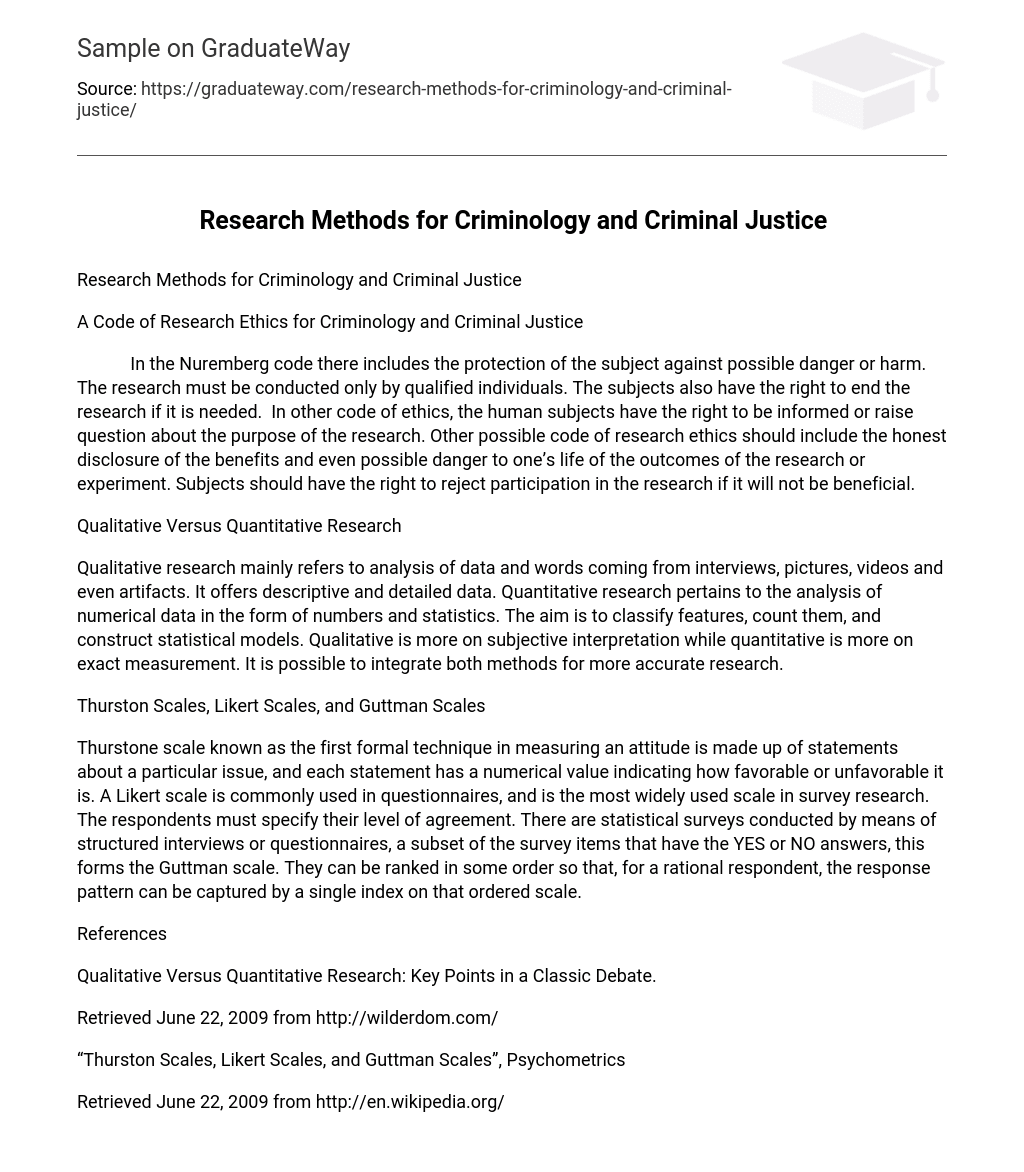A Code of Research Ethics for Criminology and Criminal Justice
In the Nuremberg code there includes the protection of the subject against possible danger or harm. The research must be conducted only by qualified individuals. The subjects also have the right to end the research if it is needed. In other code of ethics, the human subjects have the right to be informed or raise question about the purpose of the research. Other possible code of research ethics should include the honest disclosure of the benefits and even possible danger to one’s life of the outcomes of the research or experiment. Subjects should have the right to reject participation in the research if it will not be beneficial.
Qualitative Versus Quantitative Research
Qualitative research mainly refers to analysis of data and words coming from interviews, pictures, videos and even artifacts. It offers descriptive and detailed data. Quantitative research pertains to the analysis of numerical data in the form of numbers and statistics. The aim is to classify features, count them, and construct statistical models. Qualitative is more on subjective interpretation while quantitative is more on exact measurement. It is possible to integrate both methods for more accurate research.
Thurston Scales, Likert Scales, and Guttman Scales
Thurstone scale known as the first formal technique in measuring an attitude is made up of statements about a particular issue, and each statement has a numerical value indicating how favorable or unfavorable it is. A Likert scale is commonly used in questionnaires, and is the most widely used scale in survey research. The respondents must specify their level of agreement. There are statistical surveys conducted by means of structured interviews or questionnaires, a subset of the survey items that have the YES or NO answers, this forms the Guttman scale. They can be ranked in some order so that, for a rational respondent, the response pattern can be captured by a single index on that ordered scale.
References
- Qualitative Versus Quantitative Research: Key Points in a Classic Debate. Retrieved June 22, 2009 from http://wilderdom.com/
- “Thurston Scales, Likert Scales, and Guttman Scales”, Psychometrics Retrieved June 22, 2009 from http://en.wikipedia.org/





